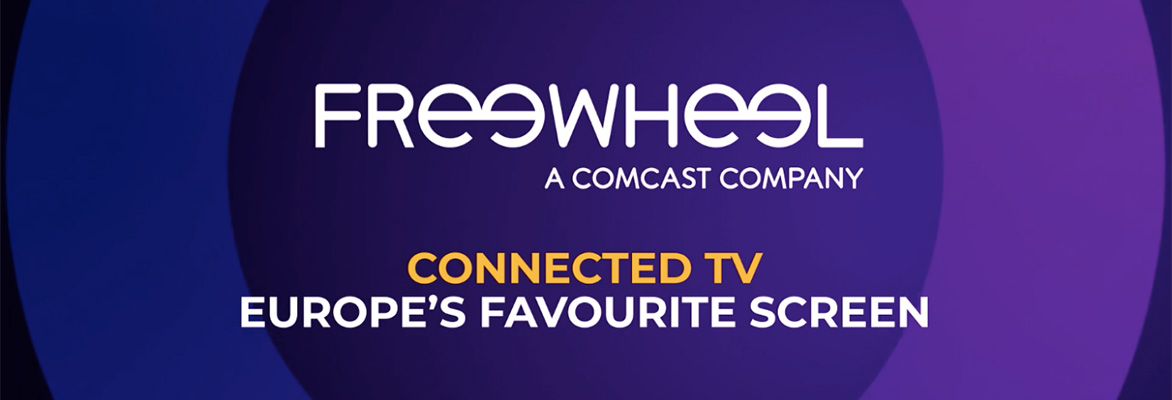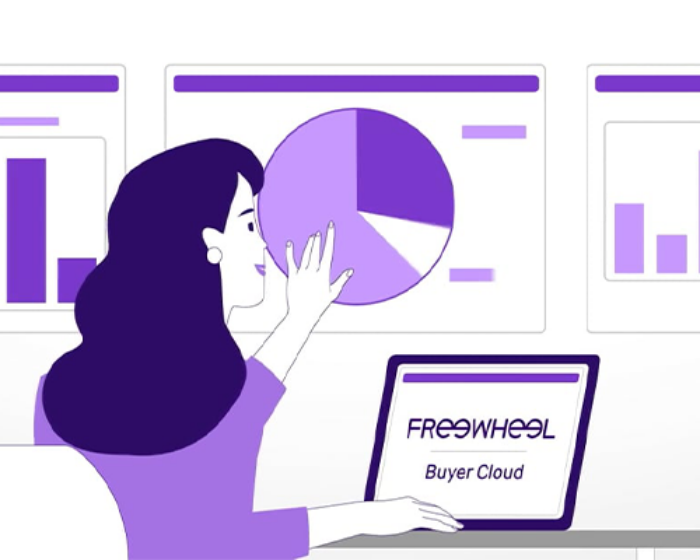We live in a connected world, where reliance on smart devices grows every day. By 2023 internet access will reach almost two-thirds of the globe, according to Cisco’s Annual Internet Report, and the number of devices connected to IP networks will be over three times the world’s population. The events of 2020 accelerated connectivity, increasing both demand and use cases, and has cemented the internet’s role as an indispensable part of daily lives.
To explore how this connectivity translates to the European TV space, FreeWheel conducted a study in collaboration with independent, consumer-focused market research company – Happydemics. The results reveal that a remarkable 70% of consumers across France, Germany, Italy and the UK have already connected their TV set to the internet, illustrating TV watching is now a predominantly connected experience across much of Europe. In the UK and France this figure is even higher at 80% and 77% respectively.
These Connected TV (CTV) users were surveyed further to understand how their TV sets are connected to the internet, to delve into viewing preferences and reasons for those preferences, to investigate usage of streaming platforms, and to determine appetite for ad-supported video services. While a few country-specific trends can be identified, it is interesting to note that the majority of results are very similar across all four markets.
Smart TVs Are the Primary Connection Type
Across the four countries surveyed, smart TVs are the most popular way to connect a TV set to the internet. Almost half (49%) of CTV viewers say they use this method, compared with 42% using set-top-box (STB) and 25% using attached devices. While these average results are fairly representative for the UK and Germany, there are notable differences for Italy and France.
When survey respondents were asked to list all the ways they connected their TV set to the internet, only 21% in France reported using a smart TV and 20% declared they use an external device such as a TV stick, TV box, or gaming console, while an overwhelming 79% use a set-top-box (STB), illustrating the central role Internet Service Providers (ISPs) play in that market. Conversely in Italy, 74% said they use a smart TV, 26% claimed to use an external device, while only 12% use an STB. German consumers are the most likely to use external devices, with almost 30% citing this as their connection type.
Connected TV Owners Are Heavy VOD Users
A clear trend to emerge from the study is that CTV users across Europe are huge fans of video-on-demand (VOD), with nine out of 10 respondents saying they regularly use their TV set to access this type of content. VOD platforms can be split into three broad categories; broadcaster video-on-demand (BVOD), subscription video-on-demand (SVOD), and free-to-access, advertising-supported video-on-demand (AVOD).
Across Europe VOD revenue increased 30-fold between 2010 and 2020, which indicates the trajectory it was on before viewers began spending more time with media due to the events of 2020. At country level, however, the picture within the broad category of VOD is nuanced. In France, slightly more CTV users access BVOD than SVOD at 58% and 57% respectively, while in Germany SVOD and BVOD are neck-and-neck at 54%.
In addition to SVOD, CTV users across the four markets currently say they use an average of two to three BVOD or AVOD platforms, which shows viewers’ desire for choice as well as a willingness to jump from one platform to another in search of suitable content.

AVOD currently only represents a small portion of VOD viewing, with between 11% and 20% of CTV owners saying they use it, depending on country. But it is a fairly new offering – especially in France. Imminent expansion is expected, especially as 30% of the CTV users, who don’t access VOD, report they are interested in using AVOD, which will naturally drive growth.
Interest in AVOD is particularly high among CTV owners that already pay for an SVOD platform. Across all four countries, 68% of SVOD users are interested in AVOD, 32% already use it regularly, 22% would like to use it alongside their subscription service, and 14% would use a free ad-supported model to replace their subscription service. AVOD use is currently highest among German SVOD subscribers, with 44% already using it regularly. In France only 21% of SVOD subscribers presently use AVOD, but 32% would be interested in using it alongside their current paid-for service.
CTV is the Preferred Screen for Video Viewing
The study’s results indicate a clear inclination for viewing video content on the CTV screen, with 53% citing this as their preference. A further 27% say they like all screens equally and have no preference.
When asked the reason behind the CTV preference, over half (55%) indicate CTV offers a enhanced user experience, with a larger screen, better sound, a simpler user interface and greater content choice. Another reason is the ability to watch with friends and family (44%). The only country to buck this overall trend is Italy, where the shared viewing experience is particularly valued, and 55% of those that prefer to watch on the CTV screen, give this reason.
The younger age group – aged 15-24 – are the only ones to show a marked preference for viewing on a mobile device. They are true digital nomads that watch predominantly VOD, and value the ability to watch video on mobile anytime, anywhere. Even when they show a preference for viewing on the CTV screen, it is largely because that enables them to use their smartphone at the same time, which raises interesting questions around co-viewing and second screening in CTV environments.
CTV is an Effective Advertising Platform
From a buyer’s perspective, CTV is a valuable advertising platform which can boost KPIs. While the results of the study are declarative, they indicate 57% of consumers across all four countries pay more attention to ads on their CTV than on other devices, while 54% say they find ads on the CTV screen less intrusive. These figures corroborate the findings of our Signature Insights: the power of CTV, which show ad completion rates are well above 90% in CTV environments.

The personalisation capabilities of CTV greatly appeal to consumers, with a majority of the respondents in France (54%), Italy (56%) and the UK (59%) responding that they prefer ads relevant to their individual interests. This figure rises to 69% for German respondents. The survey findings also show respondents acknowledged and approved of relevant advertising and free content as part of a value exchange. Across the EU4 countries surveyed, two-thirds (64%) of respondents saw the usefulness of advertising as part of a trade for free content through their CTV.
Overall, the results of the study suggest TV viewing is already a connected experience across much of Europe. As viewers embrace CTV and new premium video platforms throughout the streaming ecosystem, advertisers must take the opportunity to reach them in an environment where they are attentive and receptive to relevant and personalised messaging. The time has come to move TV advertising into the connected world.
Methodology: The study was carried out between 17th February and 5th March 2021 by Happydemics, an independent consumer-focused market research company. The survey was conducted in France with 1,129 respondents, in the UK with 1,006 respondents, in Italy with 1,302 respondents, and in Germany with 1,015 respondents, resulting in a total of 4,452 respondents across the four European countries surveyed. Consumers that reported they did not have a Connected TV in their household were not asked any further questions.



